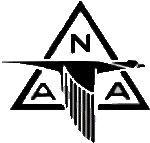Early into B-25 production, NAA incorporated a significant redesign to the wing dihedral.
The first nine aircraft had a constant dihedral, meaning the wing had a consistent, upward angle from the fuselage to the wingtip.
This design caused stability problems. “Flattening” the outer wing panels by giving them a slight anhedral angle just outboard of the engine nacelles nullified the problem and gave the B-25 its gull wing configuration.
Less noticeable changes during this period included an increase in the size of the tail fins and a decrease in their inward tilt at their tops.
NAA manufactured the greatest number of aircraft in World War II, the first time a company had produced trainers, bombers, and fighters simultaneously (the AT-6/SNJ Texan/Harvard, B-25 Mitchell, and the P-51 Mustang).
It produced B-25s at both its Inglewood main plant and an additional 6,608 aircraft at its Kansas City, Kansas, plant at Fairfax Airport.

